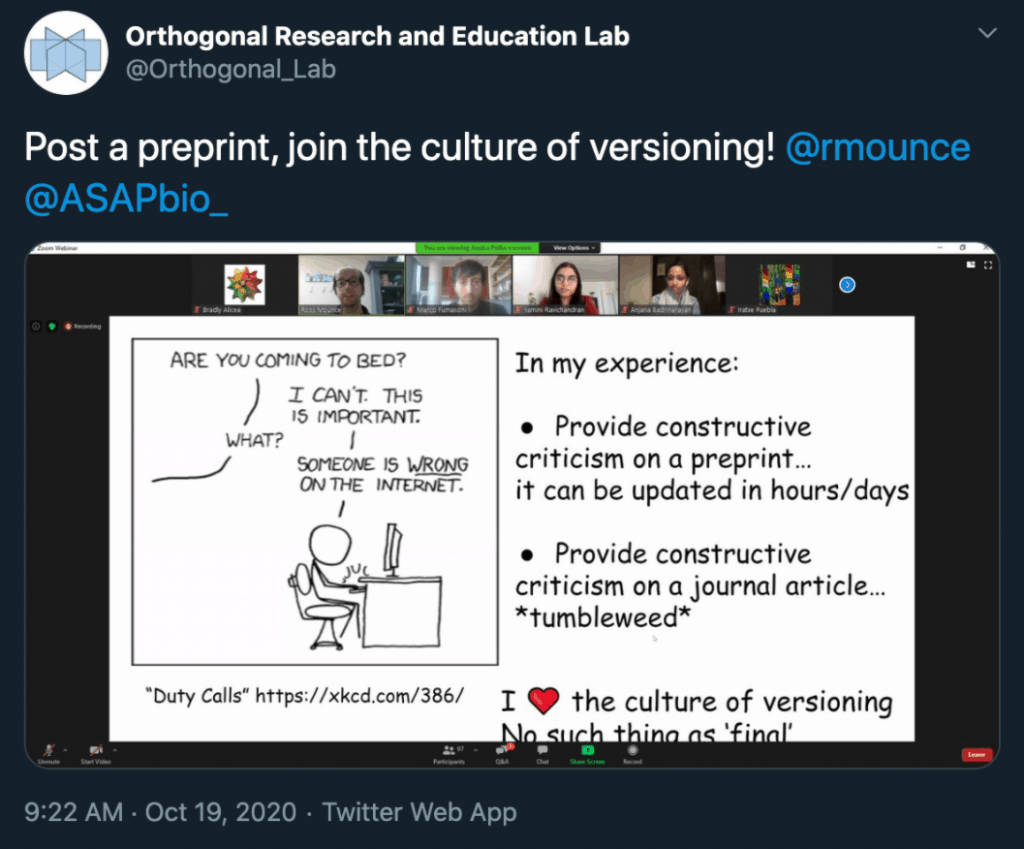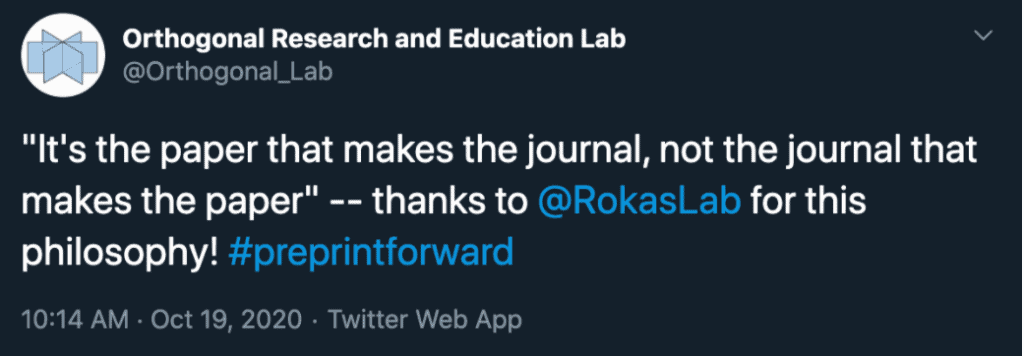Blog post by ASAPbio Fellows Bradly Alicea, Marco Fumasoni, Yamini Ravichandran & Sarah Stryeck
The ASAPBio Fellows program supports early-career researchers and those interested in topics related to the intersection of open science and scientific communication in becoming a resource about preprints for their communities. As part of the program, one working group of Fellows (Bradly Alicea, Marco Fumasoni, Yamini Ravichandran, Sarah Stryeck) chose to host a webinar panel of experts to explore the current landscape of preprints and how it may evolve.
Several weeks went into planning the event structure, working to invite a diverse set of speakers, and deciding what specific issues to focus on. The result was a 90-minute session (video) on the past, present, and future of preprints (could not attend? You can catch up on the full panel discussion below). In the hope that our experience can also be of value to others interested in outreach about preprints and open science, we have also created a Handbook that provides a roadmap to similar webinars in the future. This blogpost will highlight some of the issues and topics of particular interest that came up in the course of our discussion at the webinar.
Fittingly, “Past, Present, and Future of Preprints” was scheduled for the first day (October 19) of Open Access Week 2020. The event was live-tweeted from the Orthogonal Research and Education Lab Twitter account. Yamini Ravichandran and Marco Fumasoni started us off with a short introductory presentation, followed by a short introduction from each of our participants: Antonis Rokas, Soumya Swaminathan, Richard Sever, Ross Mounce, and Anjana Badrinarayan. This part of the session culminated with Marco posing an initial question to the panel: Can we close the geographic gap in preprint adoption?

It turns out that there are many contributing factors to preprint adoption. Some of them involve legacy patterns from manuscript submissions and publications. While preprints hold potential to democratize access to both the production and consumption of scientific literature, cultural traditions (within fields and countries), researcher agency, and community incentives are also important factors influencing preprint adoption.
The theme of research culture came up time and time again. But research culture is not only a motivating factor; pro-preprint behaviors can lead to other virtuous practices. For example, Ross Mounce suggested that preprints can encourage a culture of versioning, where different versions of a paper are viewed as important steps in the research process rather than simply being an ‘erratum’ to a posted paper.

There was also a discussion of the role traditional journals play in the research dissemination process. One future direction of preprint culture is to decouple papers from journals. Towards the end of our session, we heard a choice quote from Antonis Rokas and the Rokas Lab.

This combines nicely with observations earlier in the session regarding citation metrics: with the movement towards iteratively-developed preprints with multiple supporting components (open data sets, supplemental figures and notes), there will be a need to distinguish article quality from journal quality. Altmetrics are one path forward, but a more robust system is needed.
Thanks to all our speakers, and to the attendees for an engaging discussion! Thanks also go to Sarah Stryeck, Jessica Polka, and of course Iratxe Puebla for being a great community manager!







